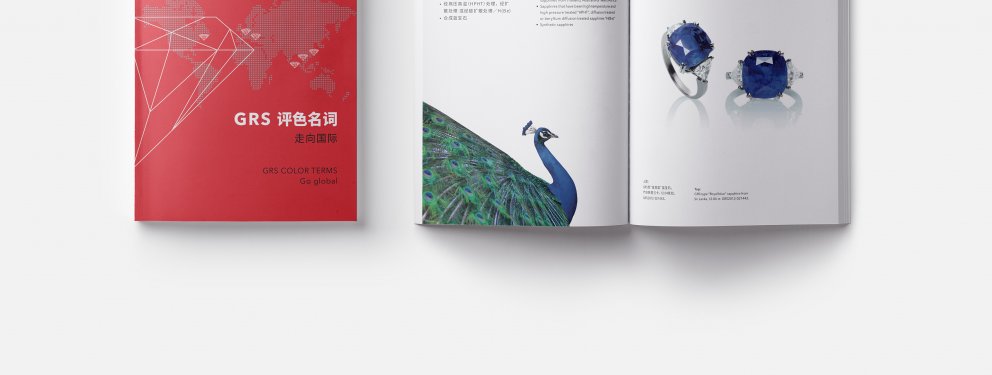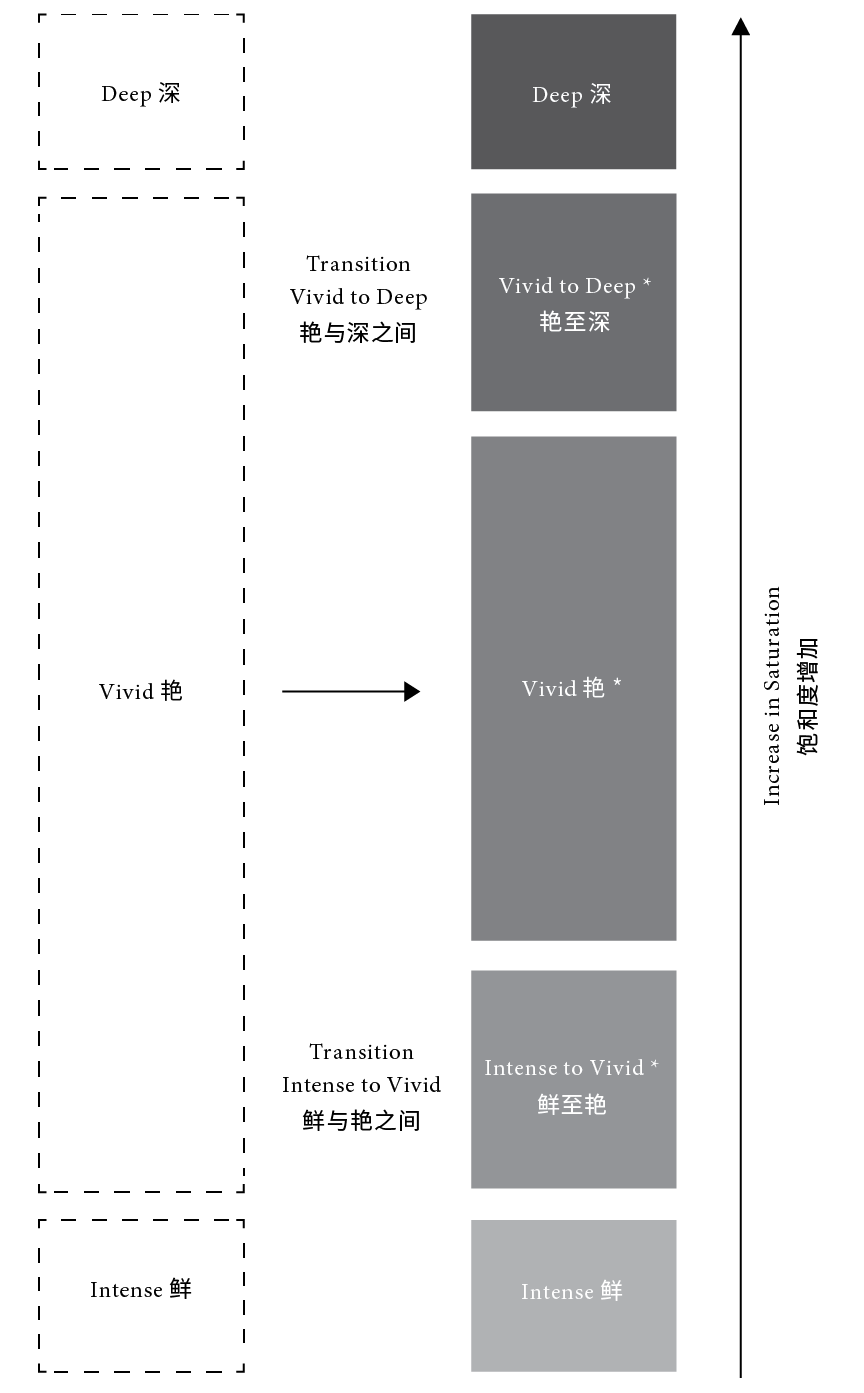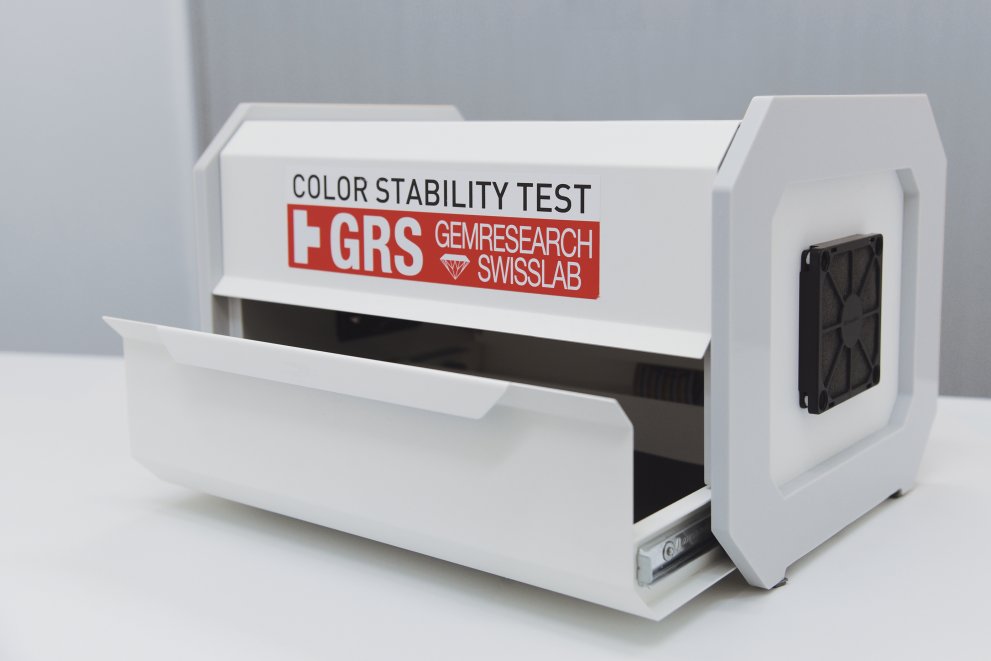Colors
Pioneering Global Industry Standards
GRS color terms truly went global and have evolved into an international standard. Our color system was actively embraced by the end-users and utilized in all trade levels, including renowned auction houses, laboratories, wholesale, and the retail market.
GRS pioneered the discipline of creating a different approach to describing color terms. In doing so, GRS has reshaped the gemstone industry concerning color communication. The primary goal has always been to create simple, clear expressions without vague terms that might confuse the final consumer. GRS bases its color grading system on comprehensive master stone sets, allocating the color grade range according to these guidelines. GRS has trademarked these color terms.
“The color is one of the few grading factors on a gemstone report that the end-users can judge for themselves. GRS helps by providing its own subjective interpretation by granting awards for colors.”
Dr. A. Peretti
The booklet is dedicated to explaining the most popular GRS color descriptions that
have been used by GRS and the global gemstone community over the past two decades. This overview explores the heritage, definitions, publications, research, and
grading standards behind GRS-type colors.

Updated GRS Color Scale
Invaluable feedback collected from the trade via
GRS public seminars, trade shows, and symposiums, has allowed GRS to further subdivide the
field of color communication into terms like GRS-type “pigeon blood” or GRS-type “royal blue” and
introduce two new transitional color grades. These
additional classifications provide a more thorough
understanding of the gemstone's exact color by
expanding their categories.
This new system went into effect in late 2017. The simplified graph below represents the changes concerning the new color grades of “vivid to deep” and “intense to vivid.”
The changes are applied to rubies, sapphires, and emeralds, resulting in the following color sub-categories for the GRS-type terms “pigeon blood” and “royal blue” and the Old Mine / Muzo green appendix.
Rubies
intense to vivid red (GRS-type “pigeon blood”)
vivid red (GRS-type “pigeon blood”)
vivid to deep red (GRS-type “pigeon blood”)
Sapphires
intense to vivid blue (GRS-type “royal blue”)
vivid blue (GRS-type “royal blue”)
vivid to deep blue (GRS-type “royal blue”)
Emeralds
intense to vivid green (Old Mine/ Muzo Green Appendix)
vivid green (Old Mine/ Muzo Green Appendix)
vivid to deep green (Old Mine/ Muzo Green Appendix)

Note: It is possible that the colors with the descriptors "intense to vivid", "vivid" and "vivid to deep" are given without the GRS-type terms “pigeon blood”, “royal blue” or the Old Mine / Muzo green appendix. Subject to properties/disqualifying factors of the individual gemstone and comparison with GRS color mastersets. For example:
- gemstones with dominant quality issues such as apparent color zoning, windowing, or disturbing inclusions
- gemstones with a lack of brilliancy (light path) and/or apparent color extinction
- gemstones that have undergone beryllium treatment / H(Be)
- rubies that have more than minor residues from heating H(c) and H(d) and lead-glass-filled rubies
- basalt-related sapphires (high Fe3+ concentrations) that often have grey or black extinctions, such as sapphires from Thailand, Australia, or West Africa
- sapphires that have been high-temperature and high-pressure treated “PHT” or diffusion treated
- emeralds of lower quality with minor to moderate and all moderate treatment grades
- emeralds with obvious and disturbing non-enhanced clarity features (non-filled fissures/cracks)
- synthetic gemstones
Color Stability Testing
Color fading is a natural phenomenon in
certain gemstones, particularly with orange to yellow sapphires. This reversible phenomenon occurs
when the sapphire is exposed to a certain type of
light. The light source's emission energy will eventually induce a color-change, effectively reducing the yellow or orange component of that sapphire. For example, an orangy-pink Padparadscha
sapphire can change to a pink sapphire color. The
original color can be reinstated after irradiation exposure to a particular light source, such as a long-wave UV light.

GRS developed a proprietary color stability test in the form of a fully integrated lightbox testing facility. This is the first fully automated and standardized color stability test that can charge, discharge and then recharge a client’s gemstone whilst accurately documenting each occurrence.
This elective test can be performed in addition to our standard service.
GRS has established four categories in which we divide the tested gemstones. After color stability testing has been performed, the observed results will be reported as follows on the GRS Gemstone Report:
TYPE 1
Comment on main report: Color stability test applied: Type 1
Comment on appendix: The GRS color stability test was applied. No indication of fading was observed (GRS-type “CST 1”). Post-testing exposure to UV- or sunlight will not decrease the color saturation and/or cause a change in hue.
TYPE 2a
Comment on main report: Color stability test applied: Type 2a
Comment on appendix: The GRS color stability test was applied. Indication of orange and/or yellow component fading was observed. A padparadscha color is visible in both the discharged and charged state (GRS-type “CST 2a”). Post-testing increase of color saturation and/or change of hue by exposure to UV- or sunlight is possible.
TYPE 2b
Comment on main report: Color stability test applied: Type 2b
Comment on appendix: The GRS color stability test was applied. Indication of orange and/or yellow component fading was observed. No padparadscha color is visible in the discharged state (GRS-type “CST 2b”). Post-testing increase of color saturation and/or change of hue by exposure to UV- or sunlight is possible.
TYPE 3a
Comment on main report: Color stability test applied: Type 3a
Comment on appendix: The GRS color stability test was applied. Indication of orange and/or yellow component increase was observed. A padparadscha color is visible in both the discharged and charged state (GRS-type “CST 3a”). Post-testing increase of color saturation and/or change of hue by exposure to UV- or sunlight is possible.
TYPE 3b
Comment on main report: Color stability test applied: Type 3b
Comment on appendix: The GRS color stability test was applied. No padparadscha (or vivid yellow or orange) color is visible in the discharged state (GRS-type “CST 3b”). Post-testing increase of color saturation and/or change of hue by exposure to UV- or sunlight is possible.
TYPE 4
Comment on main report: Color stability test applied: Type 4
Comment on appendix: The GRS color stability test was applied. Indication of fading was observed (GRS-type “CST 4”). Post-testing increase of color saturation and/or change of hue by exposure to UV- or sunlight is not possible.
Potentially applies to: Padparadscha Sapphires, Yellow Sapphires, Orange Sapphires (heated and unheated)
A Timeline of the GRS Color Terms
-
Up to 1987
Heritage and origin conceptsThe major role of an auction house may be understood in selling heritage jewelry from kings, celebrities, film stars as well as the promotion of the origin concepts (Burma premium).
-
1998
First ever "pigeon blood" and "royal blue" reports at auctionsFirst "pigeon blood" and "royal blue" gemstone reports appear in auctions catalogues on GRS reports using terminology "pigeon blood" .
Sotheby’s | Jun-1998 | London | Lot 140, Very Fine Ruby Ring | GRL 9804015
These terms never appeared in any auction catalogues prior to the introduction by GRS to the world of gemstone reports.
-
2005
The trade adopts conceptThe concept first enters the global terminology of other major labs. Initial reports from those labs appear in the auction catalogues the world over.
-
2012 -2015
Important lots sold with "pigeon blood" and "royal blue" labelSignificant objects at international auctions are sold with "pigeon blood" and "royal blue" label.
-
December 2013
Pigeon blood colour grading for rubies other than Burmese origin (Mozambique) successfully auctionedFirst GRS-type "pigeon blood" ruby with Mozambican origin was sold at a international auction house in Hong Kong. The 20.09 ct ruby was sold for HK$ 15,930,000 (approx. US$ 2M).
-
November 2015
GRS raises the "ethical" argumentGRS emphasizes their position regarding the more "ethical" approach of an independent use of origins and colors (e.g. ‘special color’ grades for all origins).
-
November 2015
Trademark / HarmonizationGRS trademarks their GRS-type "pigeon blood" (May 2015) and “royal blue” terminology.
Other laboratories harmonize their interpretation.
© 2023, GRS GemResearch Swisslab AG

